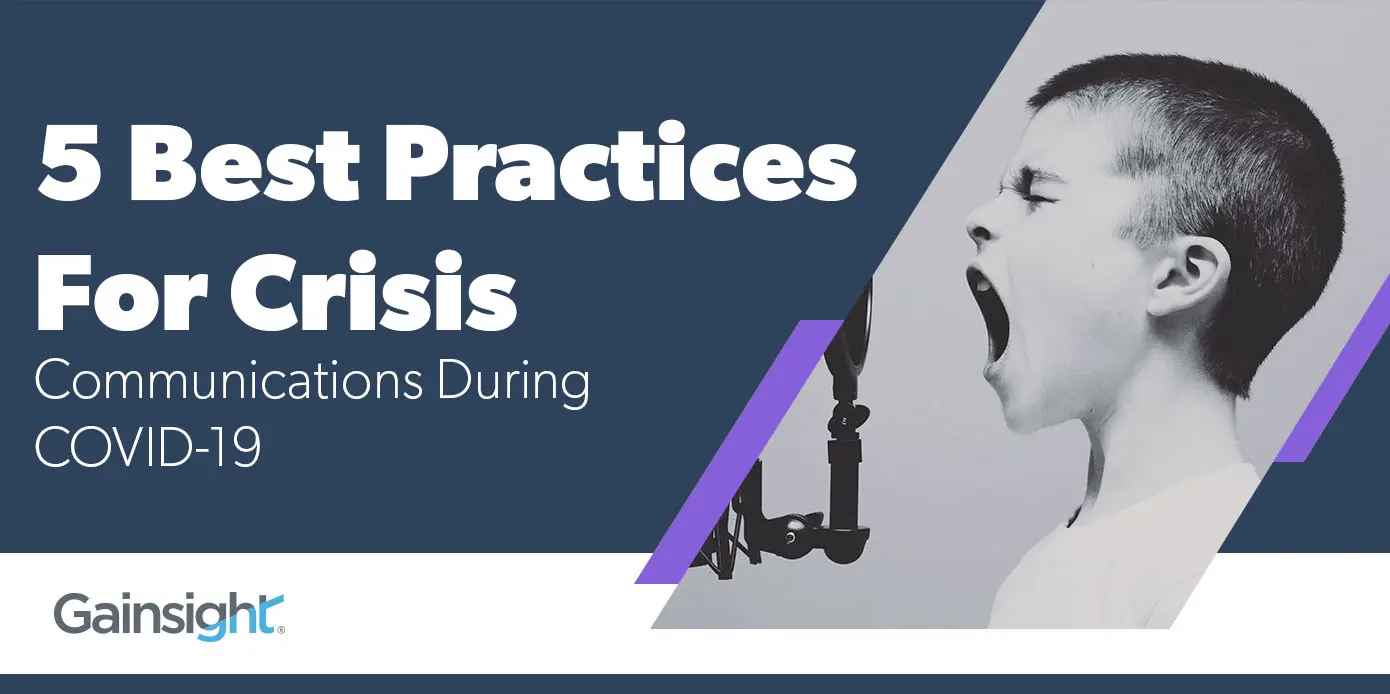If you’re like me, you probably feel like the world we live in is completely different from what it was even just a few weeks ago.
Companies, as well as their employees, are learning to adapt to the new normal of working from home, the economic fallout from the crisis, the business impact to their customers—the list goes on. It’s also clear that no one was 100% prepared for the pace at which this new normal came about. In my own life, my spouse and I are struggling with our work lives and dealing with having our daughter at home with schools shut down. My teammates and their families are going through the same issues, and our customers are feeling the financial impact of business uncertainties.
Amidst all this, some companies are doing a great job of communicating with their customers, their employees and their families, and their investors with respect to COVID-19 and its impact on all of them. I’m sure you’ve all seen this video from Arne Sorensen, President and CEO of Marriott International. Obviously the hotel (and hospitality more broadly) industry is impacted severely in this climate, but what’s notable is that the message is heartfelt, vulnerable, timely, factual, decisive, and action-oriented. What can we learn from Arne and other companies in communicating with our customers?
How leading companies communicate during a crisis
COVID-19 has obviously been a big crisis for many businesses. But it’s hardly the first or the last of many crises that impact businesses. Businesses see regulatory crises (especially in highly regulated industries like financial services, compliance, etc.), security crises (e.g., with data breaches), corporate (e.g., with mergers and acquisitions), etc. In all of these situations, speed is of the essence.
Companies need to communicate with the various stakeholders very swiftly else the narrative gets written for them. Also, with the ubiquitous presence of social media in our personal and business lives, communication has to be designed across multiple channels. Add to that the complexity of B2B businesses having multiple stakeholders at any customer (economic buyer, IT, influencers, end-users), the communications have to reach out to all of these stakeholders to not leave anyone behind.
So here are five tips to plan crisis communications for your businesses:
1. Create personalized email messages to different stakeholders from a known person at your company
As soon as possible, send emails from known leaders within your company (could be your CEO, CCO, CMO, etc.) to the key stakeholders at your customers informing them of immediate steps your company is taking to mitigate the impact of the crisis.
We sent this email from me to key personas at our customers to talk about business continuity and how we will take care of our customers and employees during the COVID-19 outbreak. We used the Journey Orchestrator functionality in Gainsight. The feature allows us to personalize the name, company, and other relevant fields to reach multiple stakeholders with the same email.
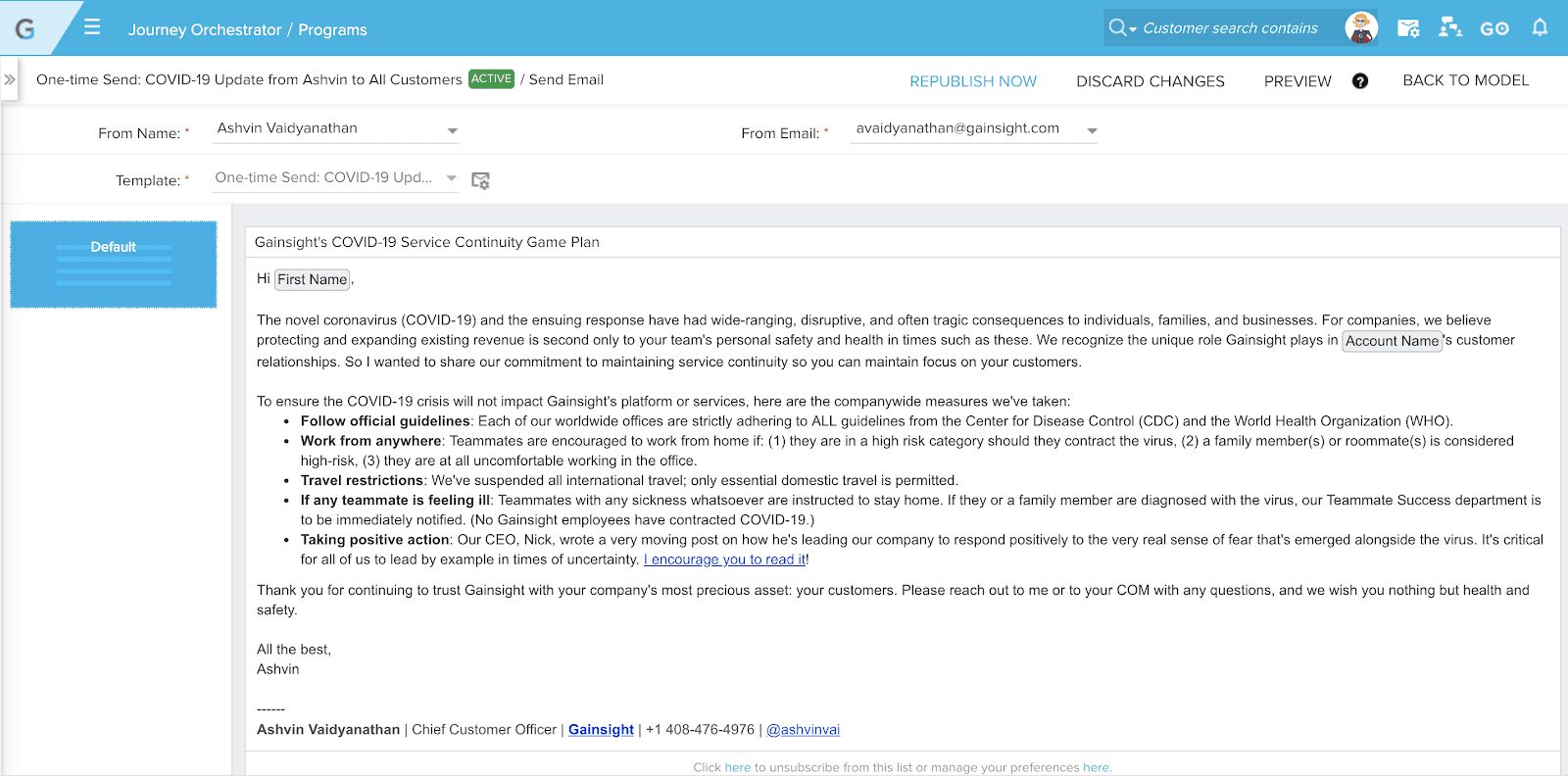
Journey Orchestrator has been a critical feature for our customers to reach out to their customers over the past few weeks in response to COVID-19, as evidenced by the rapid growth in weekly emails being sent out of JO at our customers.

2. Engage with users in your product (in-app)
Complement your email outreaches with timely messages in-app especially to reach end-users who are more likely to engage in-app than via email channels.
One of our customers Absorb LMS created some learning courses and engaged in-product to talk about them using Gainsight’s PX product.

Another customer, Seismic used PX technology to create in-app banners to communicate about the measures they are taking to take care of their employees and customers.
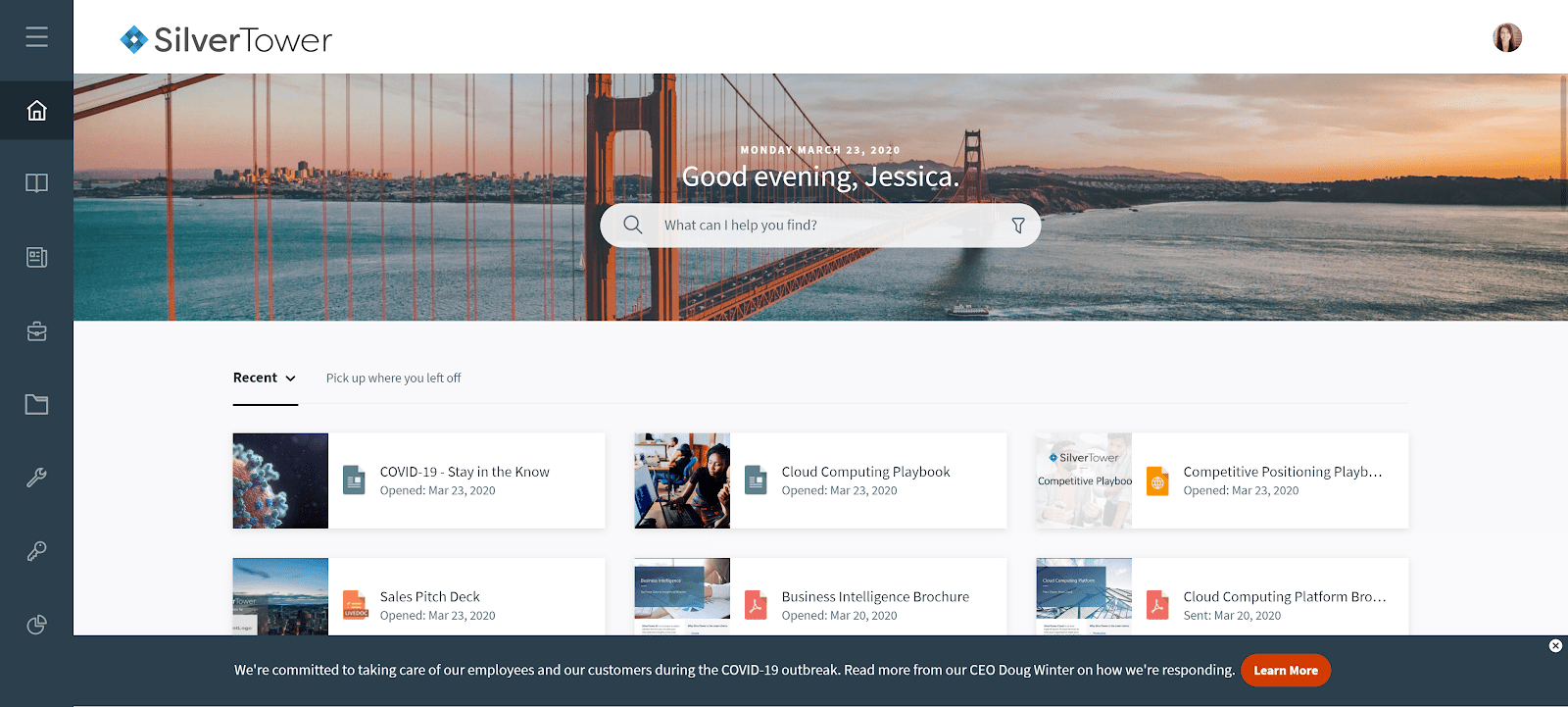
We at Gainsight used a PX banner to communicate how we are living up to values during this COVID-19 outbreak.

3. Coordinate email and in-app communications without spamming clients
While attempting to reach your customers across email and in-app, it’s also important to be respectful of how often you reach out to any person. In many companies, the email outreaches could be run by Marketing or CS teams, while the in-app messages could be run by Product or CS teams. It’s important to make sure that these outreaches are coordinated and users don’t feel spammed.
Using Gainsight Journey Orchestrator, you can trigger in-app engagements and email outreaches directly in one journey and make sure they are coordinated.
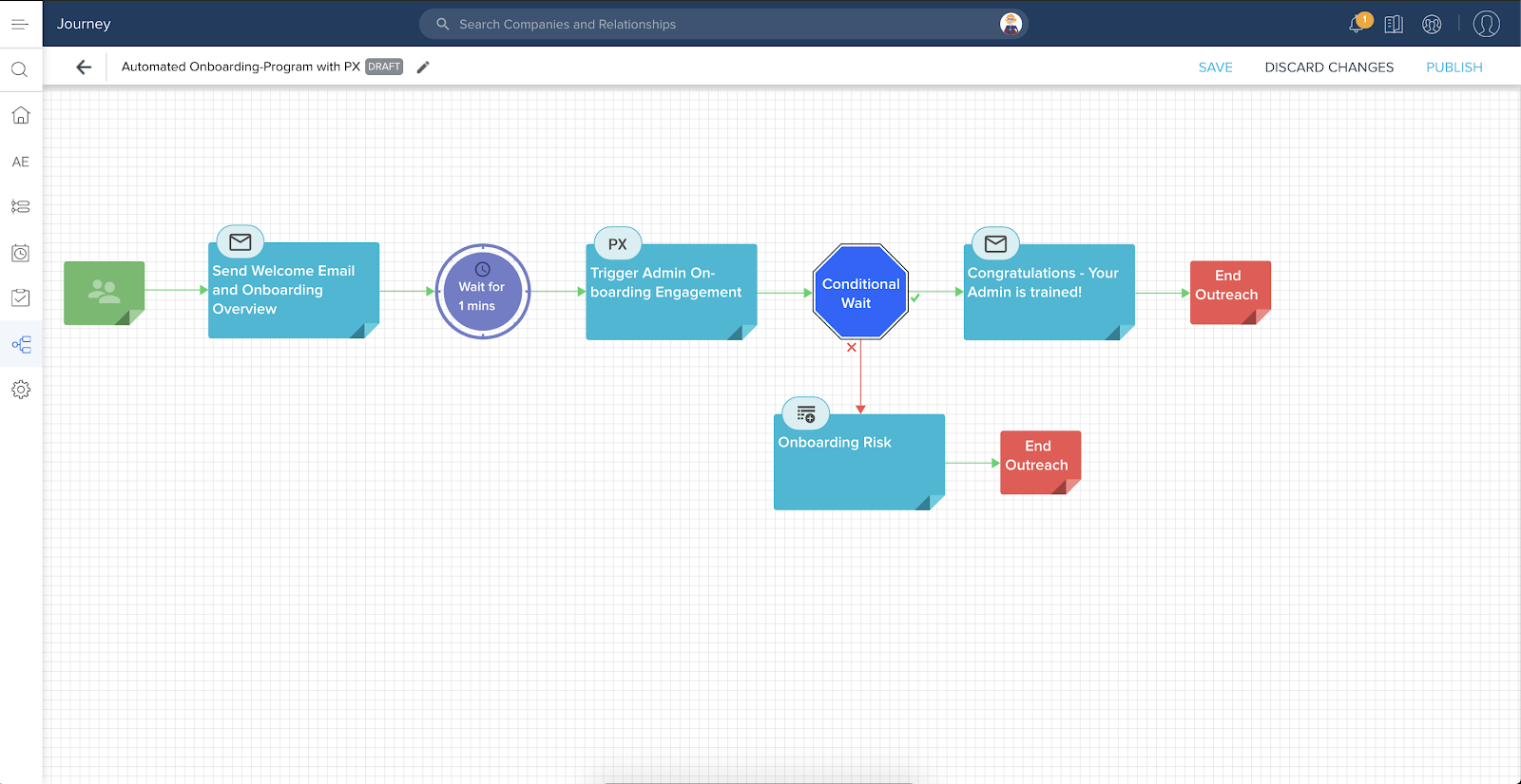
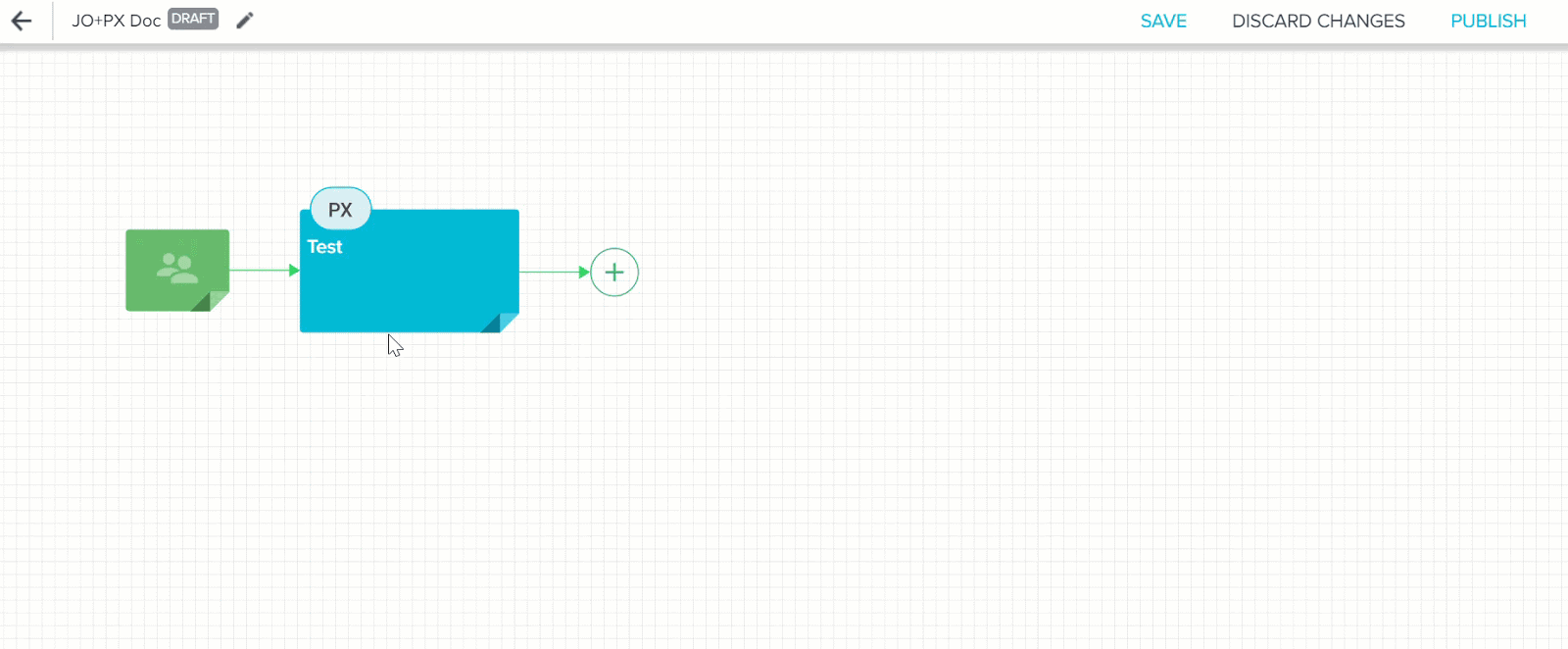
4. (Advanced) Reach customers through other media (e.g., SMS)
In some crisis situations, you might choose to interact with your customers in more intrusive channels (like SMS) because the crisis requires their immediate attention. A system down or data breach type scenario might warrant an action of this stature to reach out to customers and simultaneously create a ticket in your internal support tracking systems.
In these situations, our customers use Journey Orchestorator’s “Call API” functionality to send an SMS and/or create an alert in Zendesk and/or notify certain teams on Slack.
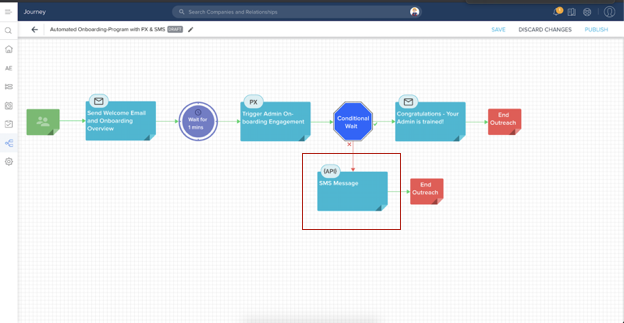
5. Create new forums to help your customers become more effective
Outside of these channels, companies have started acting swiftly to set up customer/industry resource groups or publish industry articles. These forums and articles allow companies to share deep insights that enable customers (and even broader industry groups) to react to the crisis faster and in a more effective way. Companies setting these types of forums are widely heralded for their industry leadership.
Plex Systems was able to use years of manufacturing industry data available to them as a SaaS cloud company in an anonymized fashion to analyze trends happening all around the world—and more specifically in China, Italy, and the U.S., given the current focus of the media.
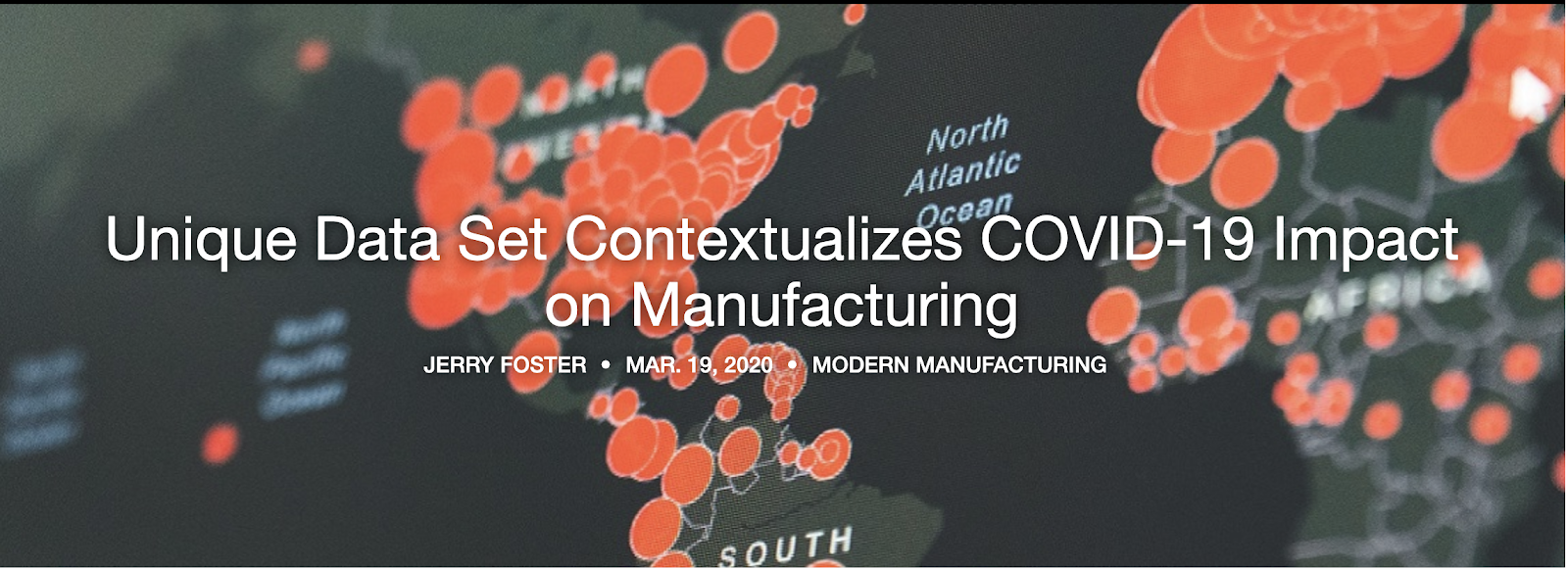
Another customer, Visier Systems, who operates in the People Analytics industry, is bringing together multiple voices in the industry (including their competitors) to share how people are using data and people analytics to support the COVID-19 response at their companies.
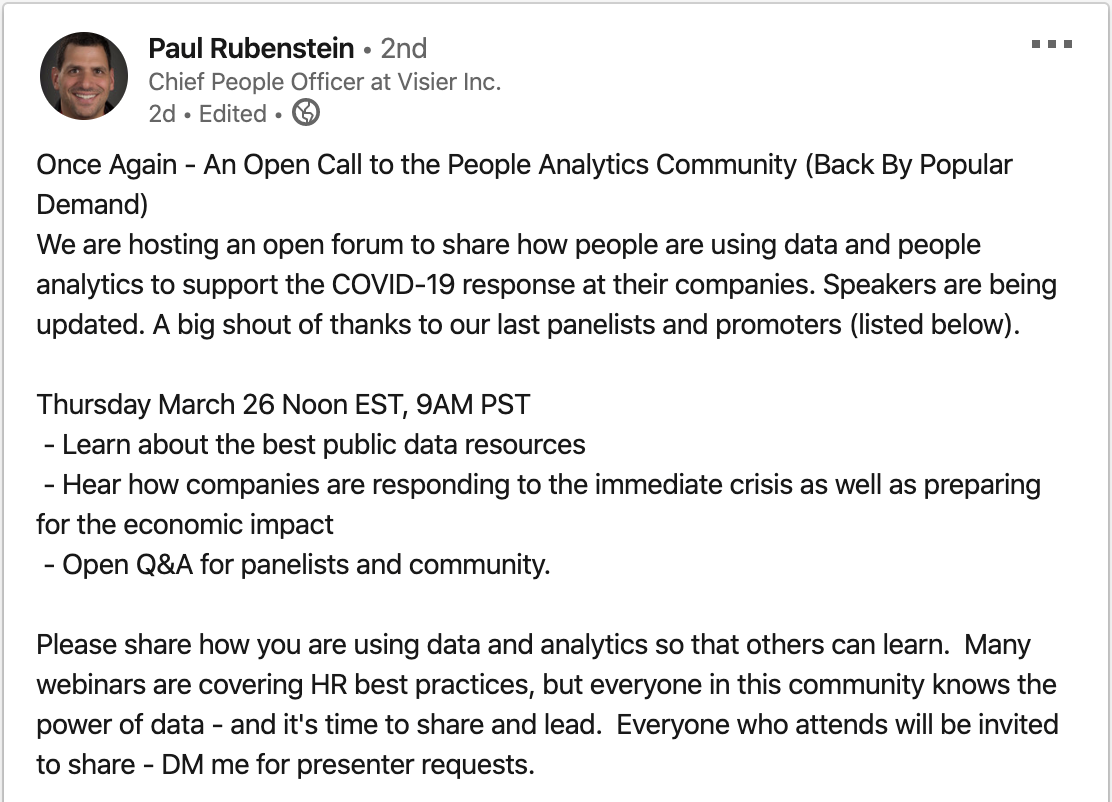
I am personally hosting a virtual breakfast with Customer Success Managers in the broader community to learn from each other as a community so we can all improve.
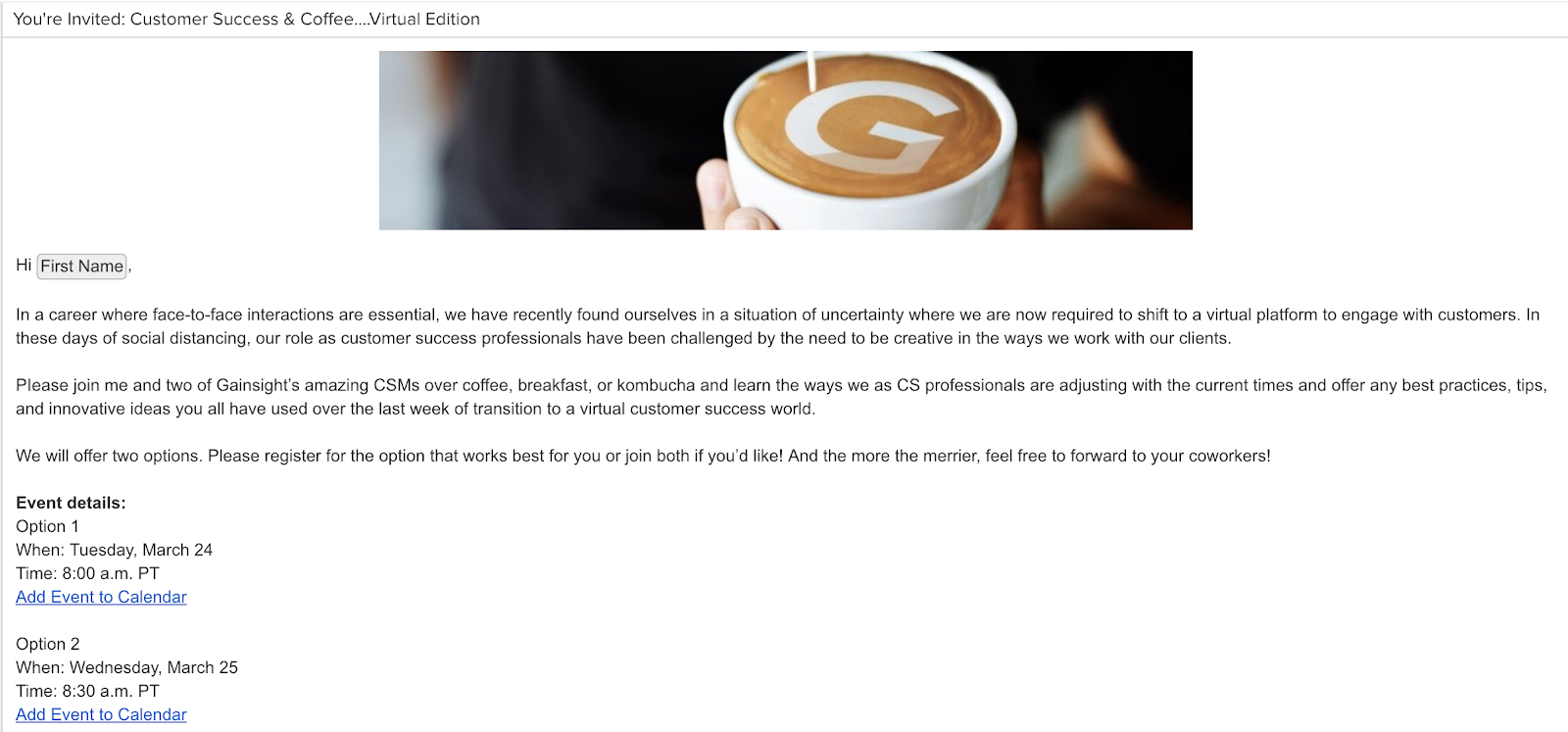
And finally, our CEO, Nick, joined with Christina Kosmowski, the VP and Global Head of Customer Success and Services at Slack, to host a webinar on best practices in virtual customer success management to help CSMs better weather the storm of transitioning away from in-person meetings. This type of content collaboration should be the new normal as more and more SaaS companies are realizing we’re all in this together.
——–
Crisis times call for swift, clear and coordinated communication. I hope some of these tips inspired ideas for the current crisis as well as dealing with future ones. As a community, we need to continue sharing these ideas with each other—we will not only survive this crisis, but also come out stronger and thrive.
